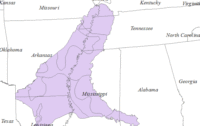Supreme Court Clears Path for States to Subsidize Nuclear Power

Zero energy credits won’t save Entergy’s Indian Point plant, which will be sold to Holtec for decommissioning after its units are shuttered, the companies announced this month.
PHOTO COURTESY OF ENTERGY NUCLEAR
States that want to subsidize nuclear power plants got a boost from the U.S. Supreme Court April 15 when it refused to hear a petition challenging a lower court decision that certain subsidies do not interfere with federal regulatory authority. Challengers say the question now is left to federal regulators.
Two lower courts previously upheld zero-emissions subsidy programs in New York and Illinois that provide payments to nuclear plants that could no longer compete with low-cost fossil generation.
The subsidies do not interfere with Federal Energy Regulatory Commission’ (FERC) authority to set power rates, the courts said.
But the Electric Power Supply Association (EPSA), a power industry trade group, argued the lower courts based their decisions on a misinterpretation of a 2016 Supreme Court ruling on power plant subsidies. In that case, the high court struck down a Maryland subsidy, saying it effectively adjusted the wholesale rate for power, which federal law reserves for FERC.
The court in that ruling also said it is possible to have a subsidy that does not interfere with FERC’s authority.
A group of energy economists agreed with EPSA that the nuclear subsidies distort pricing and undermine markets because they give guaranteed income to existing uneconomic generating units.
“The focus now shifts back to FERC,” said John Shelk, EPSA’s president and CEO, noting the agency has also said such decisions are is in its hands now.
“Absent a comprehensive energy policy in this country, it’s understandable that states are providing subsidies,” Paul Patterson, an analyst with Glenrock Associates tells ENR. Subsidies makes sense until it is clear where markets and technology are going, he says.
Many nuclear plants in deregulated wholesale markets are struggling. Their high operating and maintenance costs often make their power uncompetitive against low-cost natural gas and some renewable energy.
“We have a moral obligation to our fellow citizens to do everything we can to decrease carbon emissions,” Joseph Fiordaliso, president of the New Jersey Board of Public Utilities (BPU) said April 18 when it awarded zero emissions subsidies to the state’s only nuclear plants, Salem and Hope Creek, even though they are economically viable.
Public Service Enterprise Group, owner of Hope Creek and joint owner with Exelon of Salem, said the day before the BPU vote it would close the plants without a $300-million annual subsidy.
“We are pleased with the decision to help support New Jersey’s primary supply of zero-carbon electricity,” PSEG said in a statement.
There are worries the subsidies will come at the expense of other forms of zero emission energy. “My biggest concern is whether the $300-million subsidy will come at the expense of [future investments] in the solar and wind industry,” Jeff Tittel, director of the New Jersey Sierra Club said in an interview.
In Pennsylvania, a zero emissions Senate bill introduced April 17 would add nuclear plants as zero carbon producers. It also would add more emission credits for renewable generation to quell opposition from environmentalists.
The bill would create about $540 million in subsidies for the state’s five nuclear plants and would avert the closure of Three Mile Island, which Exelon currently plans to shut down in September. The state’s remaining plants are economic, according to a report by the PJM Interconnection.
Republican lawmakers in Ohio introduced a bill April 12 to subsidize two financially troubled plants owned by First Energy Solutions. While the subsidy also would be paid to solar farms of at least 50 MW, there are no Ohio solar projects that large. Wind farms would be eligible up to 50 MW, but legislative requirements brought wind development to a standstill in 2014 by increasing setbacks.
In New York, Entergy Corp. agreed April 16 to sell the three nuclear units at Indian Point to a Holtec International subsidiary for decommissioning after they are shuttered. Unit 1 shut down in 1974. Entergy reached an agreement with the state of New York to shutter the remaining two units in 2020 and 2021.




